Nikon Nikkor AF-S 24-85 mm f/3.5-4.5G ED VR
5. Chromatic and spherical aberration
Chromatic aberration
The Nikkor AF-S 24–85ámm f/3.5–4.5G EDáVR corrects the longitudinal chromatic aberration very well – you can find out that much while looking at the crop below, taken from our autofocus testing chart.
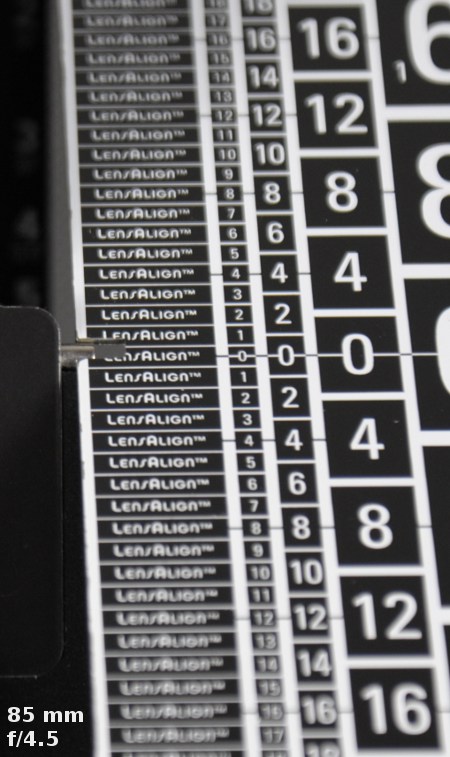 |
Please Support UsIf you enjoy our reviews and articles, and you want us to continue our work please, support our website by donating through PayPal. The funds are going to be used for paying our editorial team, renting servers, and equipping our testing studio; only that way we will be able to continue providing you interesting content for free. |
- - - - - - - - - - - - - - - - - - - - - - - - - - - - - - - - - - - - - - - - - - - - - - - -
The lateral chromatic aberration is quite another matter. The graphs below show how that aberration is corrected respectively on the DX sensor and on full frame.
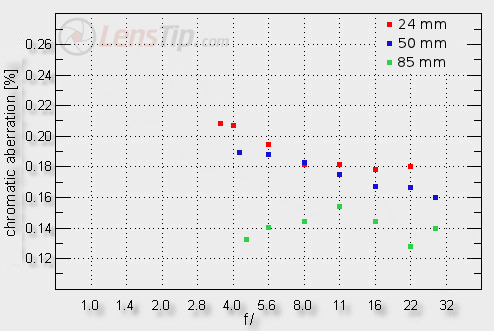
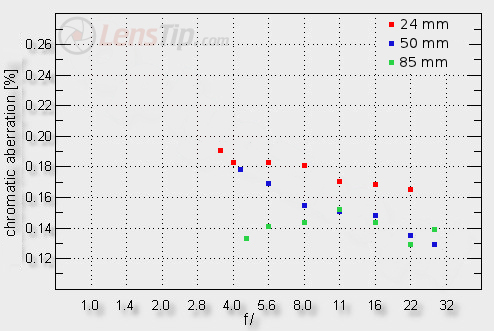
At 24-50 mm focal lengths it is high by most of apertures and near the maximum relative aperture it can become even very high. Only at the maximum focal length the chromatic aberration is on the border between a medium and high level.
There is no need to beat about the bush. The performance of the tested lens in this category is simply weak; the lateral chromatic aberration is a very important factor which can limit the resolution of a lens on the edge of the frame. At shorter focal lengths the Nikkor 24-85 mm VR fares worse than the Nikkor 24-120 mm VR which wasn’t an ideal lens to begin with, because in its case the aberration was more difficult to correct as its focal range was wider. Both Nikkors could learn a thing or two about the aberration correction from an older Canon EF 24-85 mm f/3.5-4.5 USM in which case that aberration level didn’t exceed 0.1%.
This sub-chapter we end presenting some crops taken from our test chart photos. They show very clearly that our complaints aren’t baseless and the aberration, visible in the form of distinct blue and yellow rims, makes itself felt.
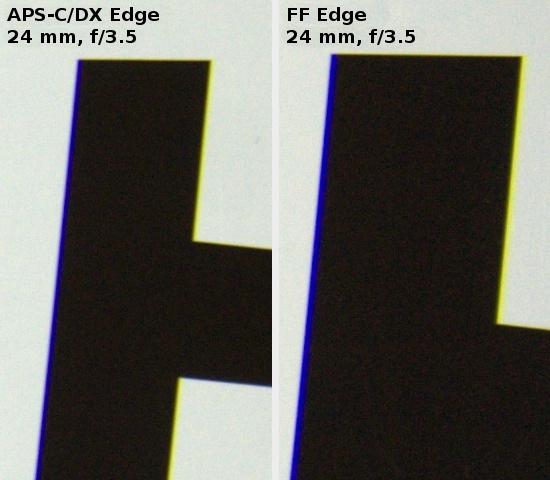 |
Spherical aberration
Our autofocus chart photos didn’t reveal any significant focus shift connected to a high level of spherical aberration. It doesn’t mean, though, that there are no spherical aberration at all. The lens is protected against that shift by its aperture and a significant depth of field after the stopping down.
Defocused photos of a diode, taken in front of and behind the focus, allows us to asses whether the spherical aberration can be perceived here.
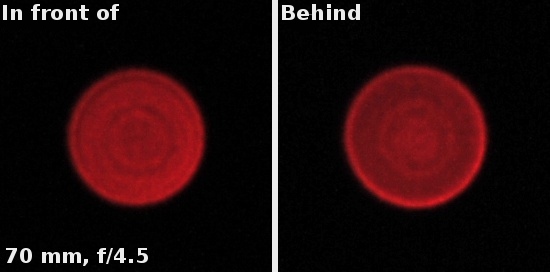
As you can notice the light spread in both circles is different. The image in front of the focus shows a distinct ‘doughnut’ created by the excess of light. In the image taken behind the focus it is the other way round – the edge is light and then you can notice a darker, concentric area situated more or less in the same place where there was an excess of light. These images prove that the spherical aberration of the tested lens is rather pronounced and intensive.






